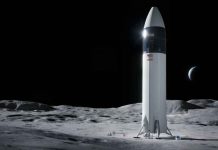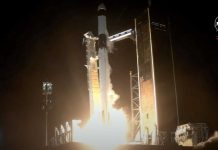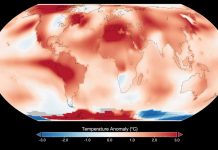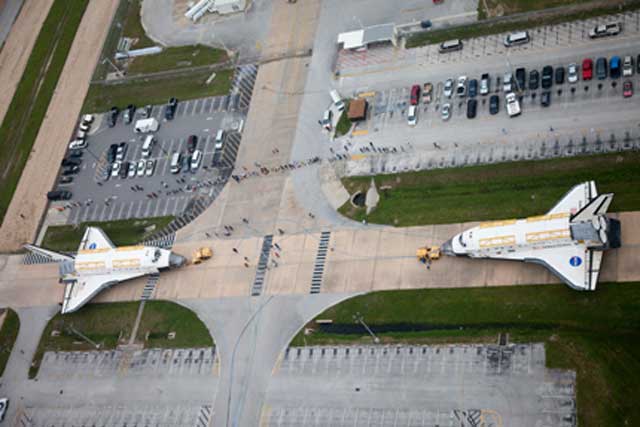 THUNDER BAY – This weekend it is likely that the movie Apollo 18 will top the box office. The movie outlines the dangers of space. However the real dangers of space is the orbital debris floating in orbit around the earth is reaching a critical level. That is the findings of a National Research Council report on orbital debris. “The current space environment is growing increasingly hazardous to spacecraft and astronauts,” said Donald Kessler, chair of the committee that wrote the report and retired head of NASA’s Orbital Debris Program Office. “NASA needs to determine the best path forward for tackling the multifaceted problems caused by meteoroids and orbital debris that put human and robotic space operations at risk.”
THUNDER BAY – This weekend it is likely that the movie Apollo 18 will top the box office. The movie outlines the dangers of space. However the real dangers of space is the orbital debris floating in orbit around the earth is reaching a critical level. That is the findings of a National Research Council report on orbital debris. “The current space environment is growing increasingly hazardous to spacecraft and astronauts,” said Donald Kessler, chair of the committee that wrote the report and retired head of NASA’s Orbital Debris Program Office. “NASA needs to determine the best path forward for tackling the multifaceted problems caused by meteoroids and orbital debris that put human and robotic space operations at risk.”
NASA states, “Space debris encompasses both natural (meteoroid) and artificial (man-made) particles. Meteoroids are in orbit about the sun, while most artificial debris is in orbit about the Earth. Hence, the latter is more commonly referred to as orbital debris. Orbital debris is any man-made object in orbit about the Earth which no longer serves a useful function. Such debris includes nonfunctional spacecraft, abandoned launch vehicle stages, mission-related debris and fragmentation debris”.
“There are more than 20,000 pieces of debris larger than a softball orbiting the Earth. They travel at speeds up to 17,500 mph, fast enough for a relatively small piece of orbital debris to damage a satellite or a spacecraft. There are 500,000 pieces of debris the size of a marble or larger. There are many millions of pieces of debris that are so small they can’t be tracked.
“Even tiny paint flecks can damage a spacecraft when traveling at these velocities. In fact a number of space shuttle windows have been replaced because of damage caused by material that was analyzed and shown to be paint flecks”.
“The greatest risk to space missions comes from non-trackable debris,” said Nicholas Johnson, NASA chief scientist for orbital debris.
Although NASA’s meteoroid and orbital debris programs have responsibly used their resources, the agency’s management structure has not kept pace with increasing hazards posed by abandoned equipment, spent rocket bodies, and other debris orbiting the Earth, says a new report by the National Research Council. NASA should develop a formal strategic plan to better allocate resources devoted to the management of orbital debris. In addition, removal of debris from the space environment or other actions to mitigate risks may be necessary.
The complexity and severity of the orbital debris environment combined with decreased funding and increased responsibilities have put new pressures on NASA, according to the report. Some scenarios generated by the agency’s meteoroid and orbital debris models show that debris has reached a “tipping point,” with enough currently in orbit to continually collide and create even more debris, raising the risk of spacecraft failures, the report notes. In addition, collisions with debris have disabled and even destroyed satellites in the past; a recent near-miss of the International Space Station underscores the value in monitoring and tracking orbital debris as precisely as possible.
The strategic plan NASA develops should provide a basis for prioritizing efforts and allocating funds to the agency’s numerous meteoroid and orbital debris programs, the report says. Currently, the programs do not have a single management and budget structure that can efficiently coordinate all of these activities. The programs are also vulnerable to changes in personnel, as nearly all of them are staffed by just one person. The strategic plan, which should consider short- and long-term objectives, a schedule of benchmark achievements, and priorities among them, also should include potential research needs and management issues.
Removal of orbital debris introduces another set of complexities, the report adds, because only about 30 percent of the objects can be attributed to the United States.
“The Cold War is over, but the acute sensitivity regarding satellite technology remains,” explained committee vice chair George Gleghorn, former vice president and chief engineer for the TRW Space and Technology Group. Although NASA has identified the need for removing debris, the agency and U.S. government as a whole have not fully examined the economic, technological, political, and legal considerations, the report says. For example, according to international legal principle, no nation may salvage or otherwise collect other nations’ space objects. Therefore, the report recommends, NASA should engage the U.S. Department of State in the legal requirements and diplomatic aspects of active debris removal.
In its examination of NASA’s varied programs and efforts, the committee found numerous areas where the organization should consider doing more or different work. For example, NASA should initiate a new effort to record, analyze, report, and share data on spacecraft anomalies. This will provide additional knowledge about the risk from debris particulates too small to be cataloged under the current system yet large enough to potentially cause damage.
In addition, NASA should lead public discussion of orbital debris and emphasize that it is a long-term concern for society that must continue to be addressed. Stakeholders, including Congress, other federal and state agencies, and the public, should help develop and review the strategic plan, and it should be revised and updated at regular intervals.
Image: Space shuttles Endeavour and Discovery meet in a “nose-to-nose” photo opportunity as the vehicles switch locations Aug. 11 at NASA’s Kennedy Space Center, Fla. Now in Orbiter Processing Facility-1 (OPF-1), Discovery will go through more preparations for public display at the Smithsonian’s National Air and Space Museum Steven F. Udvar-Hazy Center in Virginia next spring. Endeavour will be stored in the Vehicle Assembly Building (VAB) until October, when it will be moved into OPF-2 to continue being readied for display at the California Science Center in Los Angeles next summer. Image credit: NASA/Frankie Martin






